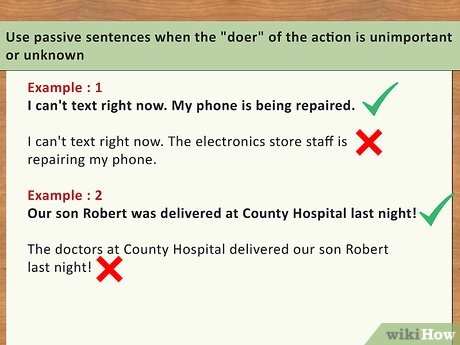Passive sentences have long been a point of contention among writers and grammarians. Some argue that they are a useful tool for creating variety in writing, while others believe they should be avoided at all costs. In this article, we will explore the pros and cons of using passive sentences in writing.
One argument in favor of passive sentences is that they can help to shift the focus of a sentence onto the object of an action, rather than the subject. This can be useful in situations where the subject is unknown or unimportant, or when the writer wants to emphasize the action itself. For example, “The cake was eaten by the children” puts the focus on the cake and the act of eating, rather than the children who are doing the eating.
On the other hand, opponents of passive sentences argue that they can make writing less clear and direct. Active sentences, in which the subject performs the action, are generally considered more engaging and easier to understand. Passive sentences can also be wordy and convoluted, leading to reader confusion. For example, “The meeting was attended by all employees” could be more simply stated as “All employees attended the meeting.”
Despite these criticisms, passive sentences can be a valuable tool in certain situations. In academic writing, for example, passive constructions are often used to maintain objectivity and avoid attributing actions to specific individuals. They can also be helpful in technical writing, where the focus is on the process rather than the actor. In these contexts, passive sentences can be a useful way to convey information clearly and accurately.
Ultimately, the decision to use passive sentences in writing should be based on the specific needs of the text and the intended audience. While passive sentences can be effective in certain situations, they should be used sparingly and with care to ensure that they enhance rather than detract from the overall clarity and impact of the writing.
In Conclusion
In conclusion, passive sentences can be a valuable tool for writers, but they should be used judiciously and with an awareness of their potential drawbacks. By considering the context and purpose of the writing, writers can make informed decisions about when and how to use passive constructions effectively. Whether viewed as good or bad, passive sentences have a place in the writer’s toolkit, offering a way to vary sentence structure and emphasize the object of an action.
